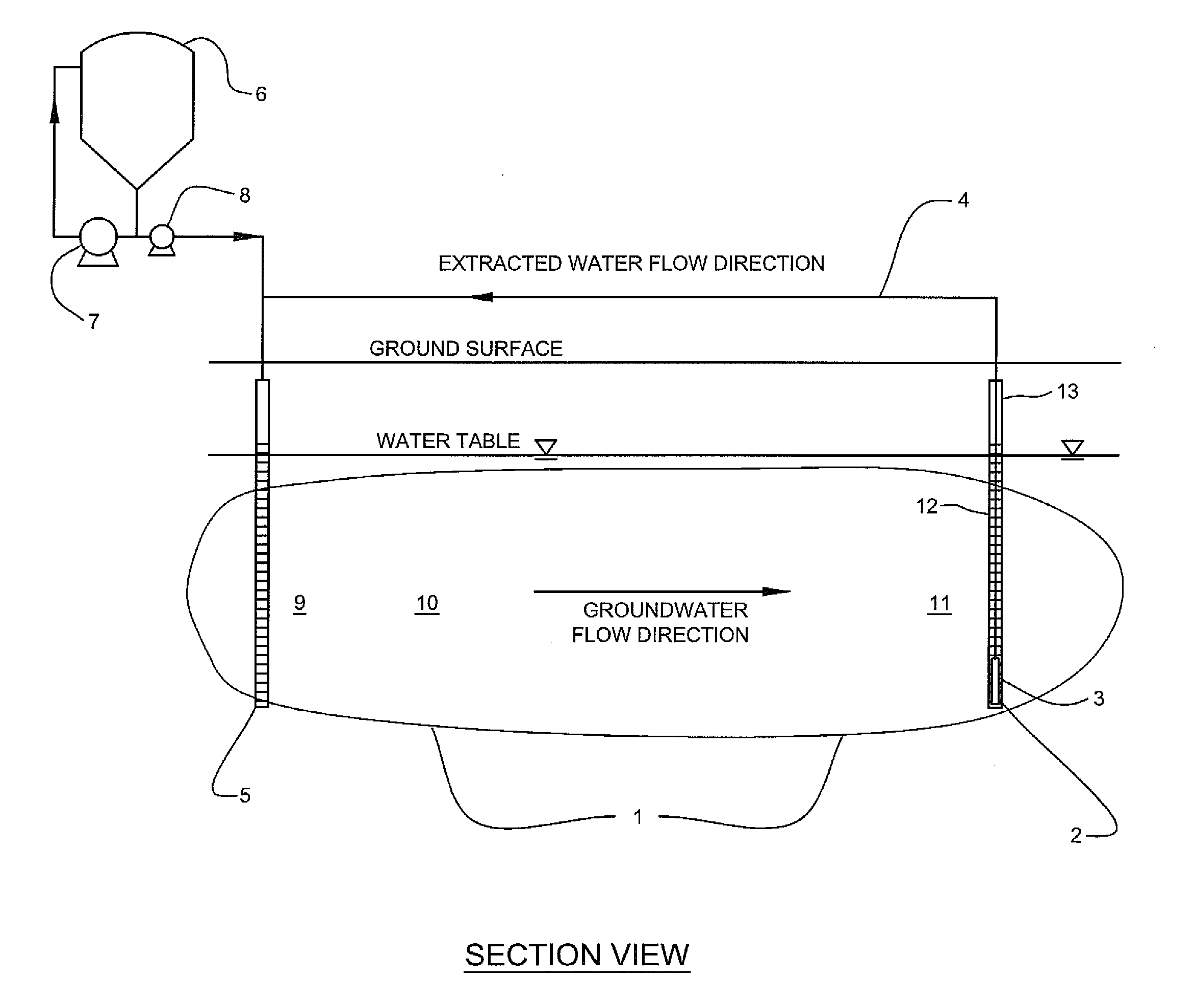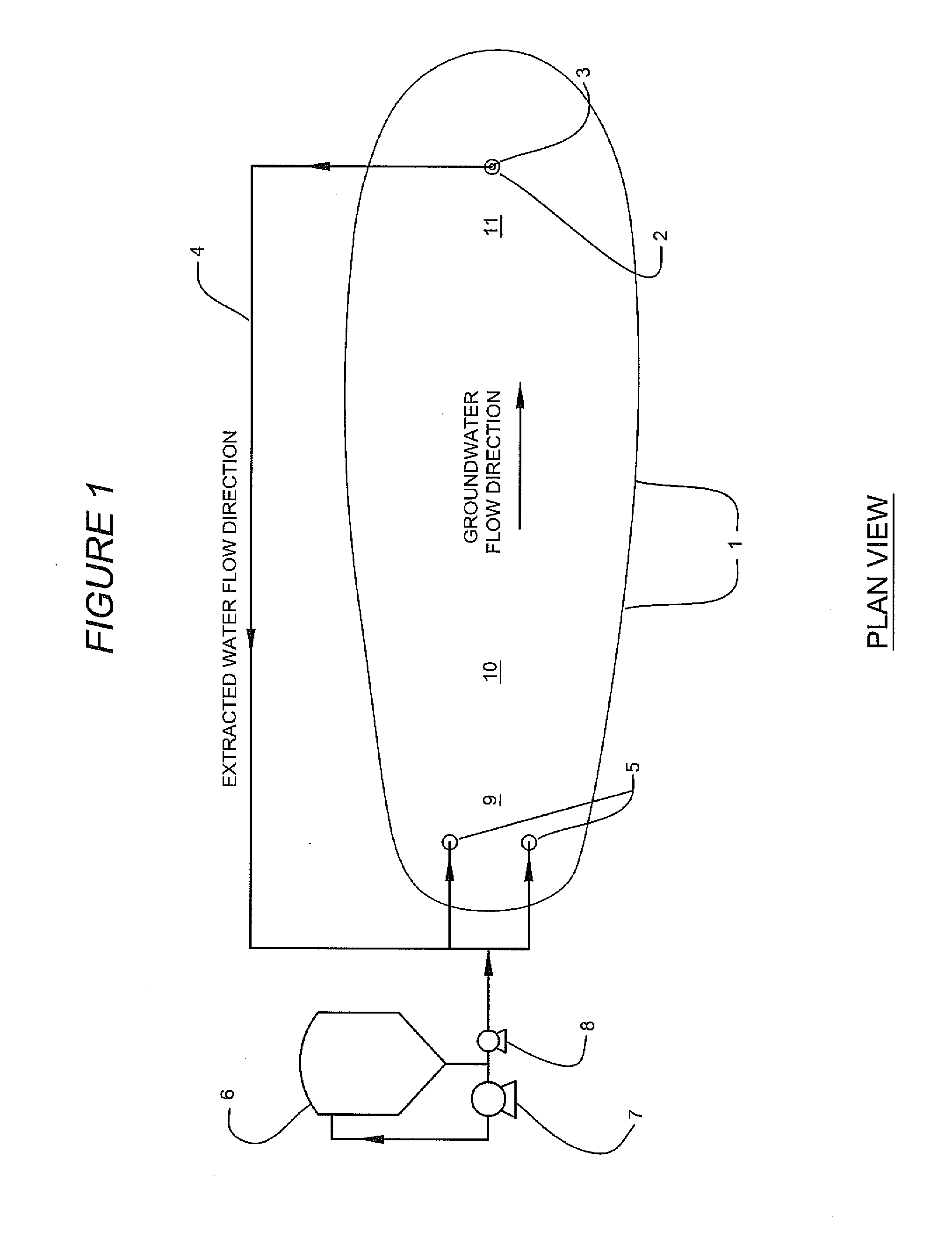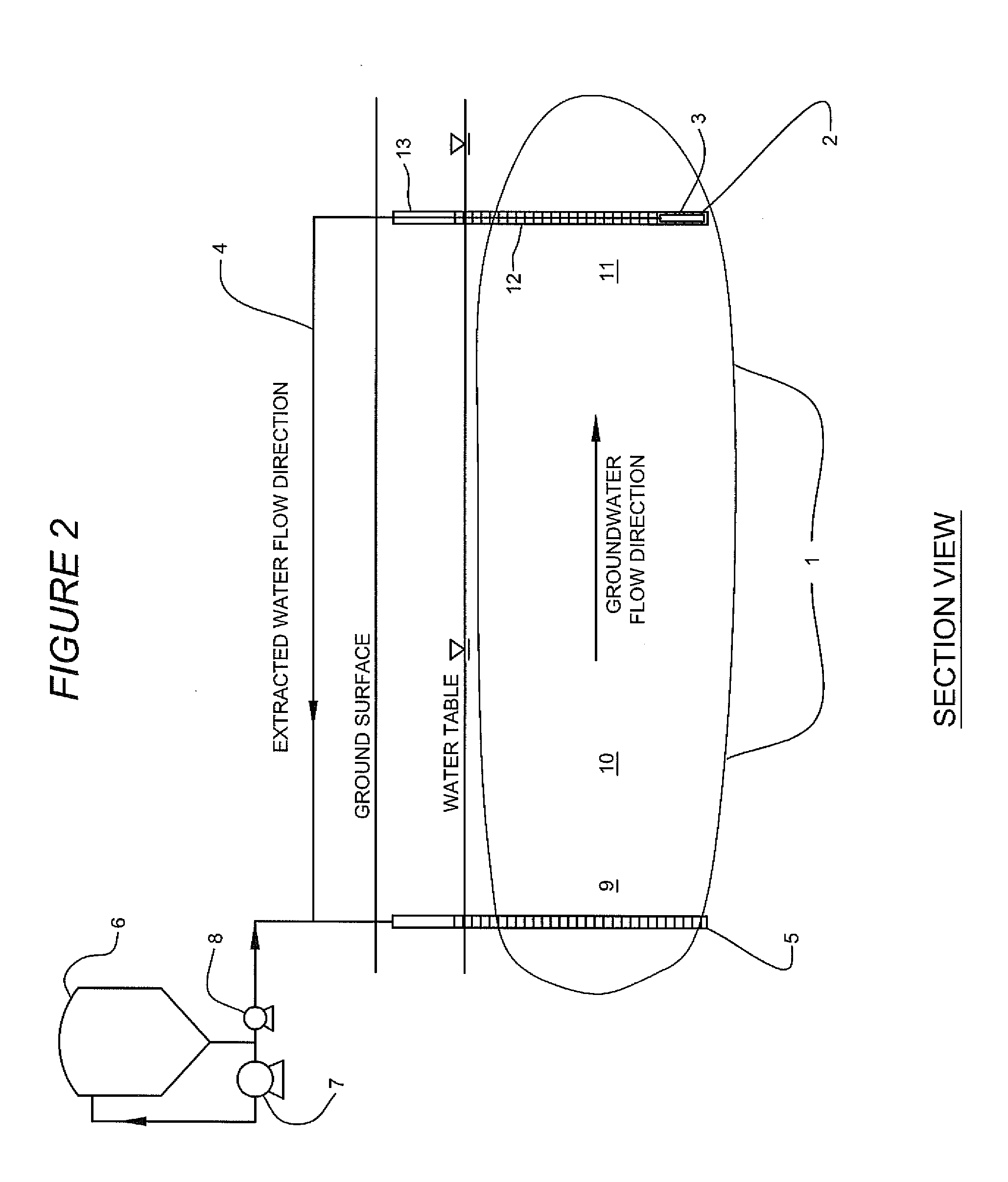Mixed substrates for anaerobic bioremediation in aquifers
a bioremediation and mixed substrate technology, applied in the field of remediation, can solve the problems of large area that took long periods of time to become, significant alkalinity demand or sharp drop in ph, and high cost of groundwater extraction and above-grade treatment, and achieve the effect of low cost and easy injection
- Summary
- Abstract
- Description
- Claims
- Application Information
AI Technical Summary
Benefits of technology
Problems solved by technology
Method used
Image
Examples
Embodiment Construction
[0043]The invention is directed to a process for making and applying a degradable substrate mixture to quickly and effectively establish anaerobic conditions in contaminated groundwater for bioremediation of CAHs with reductive dechlorination, precipitation of oxidized metals as metal sulfides, and reduction of inorganics amendable to anaerobic remediation such as nitrate and perchlorate. The degradable substrate formulation buffers pH and helps reduce biological fouling in injection wells.
[0044]FIG. 1 shows a plume of contaminated groundwater 1 consisting of CAHs, dissolved metals, or inorganics such as nitrates and perchlorate which is targeted for remediation. Extraction well(s) 2 or other groundwater extraction structures are installed at the downgradient end of the targeted remediation area and groundwater is pumped out with well pump 3 and transferred within piping or conduits 4 placed above or below-grade and connected to injection wells 5 or other injection structures instal...
PUM
| Property | Measurement | Unit |
|---|---|---|
| water-soluble | aaaaa | aaaaa |
| area | aaaaa | aaaaa |
| concentration | aaaaa | aaaaa |
Abstract
Description
Claims
Application Information
 Login to View More
Login to View More - R&D
- Intellectual Property
- Life Sciences
- Materials
- Tech Scout
- Unparalleled Data Quality
- Higher Quality Content
- 60% Fewer Hallucinations
Browse by: Latest US Patents, China's latest patents, Technical Efficacy Thesaurus, Application Domain, Technology Topic, Popular Technical Reports.
© 2025 PatSnap. All rights reserved.Legal|Privacy policy|Modern Slavery Act Transparency Statement|Sitemap|About US| Contact US: help@patsnap.com



